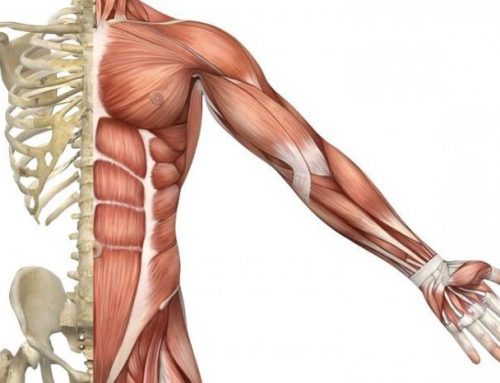It should be emphasized that the set of training principles is not a rigid structure. During the existence of bodybuilding as a sport, training methods have been constantly improved. The effectiveness of a methodology is a very relative concept. Times have changed, and one most effective training methodology has been replaced by another most effective methodology.
In order to trace the dynamics of changes in training methods used in bodybuilding, it is necessary to make a kind of retrospective review of methods. Perhaps such a review will allow some bodybuilders to discover that they are using training methods from the sixties and seventies of the last century.
Back in the fifties and sixties, even the best bodybuilders trained 3-4 times a week. Their program contained exercises for all major muscle groups, and they worked all muscle groups in every workout. The beginners used 9 repetitions in one set and tried to add one repetition each week until they reached 12 repetitions, then increased the weight of the apparatus and started again with 9 repetitions. This was, however, an inefficient system. The muscle groups that were trained first developed better because the body has more energy at the beginning of the workout, while the muscles that were worked in the second half of the workout developed weaker. This often led to uneven development of muscle groups and problems with body proportions.
Vader proposed a different training cycle, dividing the weekly training program into two parts. This method of training was called a “split”. With four workouts per week, for example, four muscle groups were worked on Monday and Thursday, and three other muscle groups were worked on Tuesday and Friday. At six workouts per week, 2-3 muscle groups were worked at each workout, usually 2 times per week. The “split” system was more progressive and allowed more emphasis on training each muscle group, resulting in more even development of the different muscle groups. Examples of 4-times-a-week split training were given earlier when the pyramid principle was considered.
Further development of the training methodology was manifested not only in the use of the “split” system, but also in the discontinuation of the use of near-limit weights, which allowed to perform 2-4 repetitions in an approach. The necessity of such changes in training methods was explained by the influence of new scientific discoveries in the field of skeletal muscle structure and the speed of recovery processes in muscles.
As you may have noticed, the previously described split workouts used the full pyramid, i.e. a gradual increase in the weight of the projectile up to 90% of the maximum, with a simultaneous reduction in the number of repetitions to two. But, as you may have learned from the previous chapters, the use of near-limit weights, which do not allow you to continue muscle contractions long enough, does not lead to a significant increase in muscle mass. This is clear to us now, from the point of view of modern science, but it was a different time and a different level of knowledge. When it was realized that the use of large weights does not increase muscle mass, but requires large energy expenditures, the principle of the pyramid changed somewhat – they began to use a “truncated” pyramid:
-
- with weight 45% of Mx – 12 reps;
- with weight 55% of Mx – 10 reps;
- Weighing 65% of Mx – 8 reps;
- With weight 65% of Mx – 8 reps;
- with weight 75% of Mx – 6. reps;
- further performed 3-4 approaches with a weight of 75%, or
- with a weight of 80% of Mx – 3 approaches of 5 reps
In fact, the principle of the “truncated” pyramid, in different variations, has been successfully applied until today in various training programs.
An example of the use of this principle is Casey Viator’s training:
Monday, Thursday .
1. Torso Raise, lying on an incline bench, hands behind the head, legs slightly bent at the knees – 3×20-30 (This exercise was performed as a comprehensive leg and torso warm-up, and was always performed at the beginning of the workout).
2. Hyperextension (exercise for straight back muscles) 3×15-20.
3. Deep squats with barbell on shoulders, slow tempo – 5×6-10
4. Leg curls in the machine, sitting – 3×6-8
5. Pulling up the bar to the chest, in an incline (torso parallel to the floor) – 4×6-8
6. Pull-up block to chest, from above – 3×6-8
7. Standing, holding the barbell in the hands lowered down, lifting up the shoulders (trapezius muscle) – 3×10-15
8. Dead pull (standing pull), the barbell is set on an elevation of about 20 cm – 3×15-20
9. Bending arms with a barbell, standing, elbows strongly pressed to the sides – 3×6-8,
10. Bending arms with barbell, grip from above – 3×6-8.
11. Bending arms with barbell, grip from below, elbows resting on thighs – 4×10-15.
12. Fingerstands at a slow pace – 5×10-15
Tuesday, Friday
1. Leg raises, lying on an inclined board (always performed at the beginning of the workout) 3×20-30
2. Bench press, lying down, middle grip 5×6-10
3. Arm extension across the sides, lying on an inclined bench, arms slightly bent at the elbows 3×6-8
4. Classic chest press 4×6-8
5. Pull-up barbell along the body to the chin, narrow grip 3×6-8
6. Dumbbell arm curls with dumbbells across the sides, standing 3×6-8
7. French press from forehead, lying down 3×6-8
8. French press from behind head, standing 2×6-8
9. Hand flexion with barbell, overhead grip 4×10-15
10. Fingerstands, sitting 4×10-15
11. Standing on toes on one leg, one hand holding the weight, the other resting on the wall 3×10-15
In his workouts, Casey Viator always performed two exercises per muscle group: the first was a basic, heavy, bodyweight exercise, and the second was an isolation exercise. In the basic exercises, he would perform 1-2 warm-up approaches with smaller weights, and then 3 approaches with a progression of weights so that he could perform 6-8 repetitions with the heavier weight. In isolation exercises, 2-4 approaches with the same weight were performed, but until complete muscle fatigue.
In the future, as a result of searching for more effective training methods, both the “split” system itself and methods of muscle loading in the process of separate training are being improved. This will be discussed in more detail in the next chapter.
-
- The next chapter: 12. The “SPLIT”system.
- Previous Chapter: 10. Vader’s Training Principles
- Beginning
The use of materials of the site in printed publications is possible only after obtaining written permission of the author of the site.






